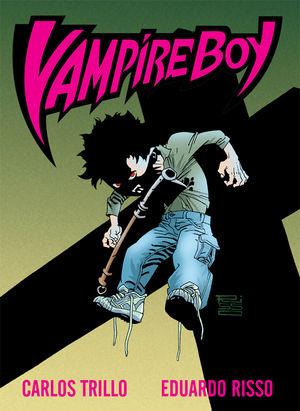| Quote: |
| Sure, I can’t die but I don’t have a life either. |

This book collects the four volumes of Vampire Boy into English for the first time. It is one of a number of collaborations between the Argentinean creators – writer Carlos Trillo, who died earlier this year, and artist Eduardo Risso. This is a fairly early work for Risso from the early nineties and features some wonderful black & white art.
The nameless vampire boy of the book’s title is one of two survivors of a mysterious disease that swept through a company of travellers in ancient Egypt that left his father, the pharaoh Khufu, and the remainder of his party dead in the desert. The other survivor is a priestess named Ahmasi, a favourite consort of Khufu until the boy points out her indiscretions with others in the court. So starts a cycle of hatred and violence between the pair that endures throughout the centuries. Though they try neither can kill the other by conventional means as the sun restores them to health and vitality. The story opens with the boy being revived when a construction site opens a shaft of light to his hidden body. Ahmasi soon discovers that the boy is back in circulation and begins a blood soaked quest to track him down and kill him once and for all.
The book comes in at nearly 500 pages and while that gives us lots of lovely Risso art work to look at, it does mean that the story does drag slightly at times. But mostly it is great as we come to sympathise with the nameless boy and his heartbreaking existence. Unusually for a vampire tale, the sun, as previously mentioned, regenerates the vampires and while they can feed on blood the boy tends not to and can survive on normal food – but has to eat an awful lot of it. The book has a wide ranging canvas taking us from modern New York to New Orleans and London as well as flashbacks throughout history as the nature of the relationship between the boy and Ahmasi is explored. The boy comes across as a tired gentle soul who makes friends easily but not usually for long as Ahmasi will stop at nothing to reach him.
As I said previously, Risso’s art is great and the use of shade and silhouette reminds me of the work of Frank Miller on Sin City round about the same time. There is a noirish element to the story too as Ahmasi works as a prostitute, is followed around by a lovestruck detective who she uses to track down the boy and generally seems to attract the seedier side of life. A welcome change of pace from the costumed antics of the American superheroes.




